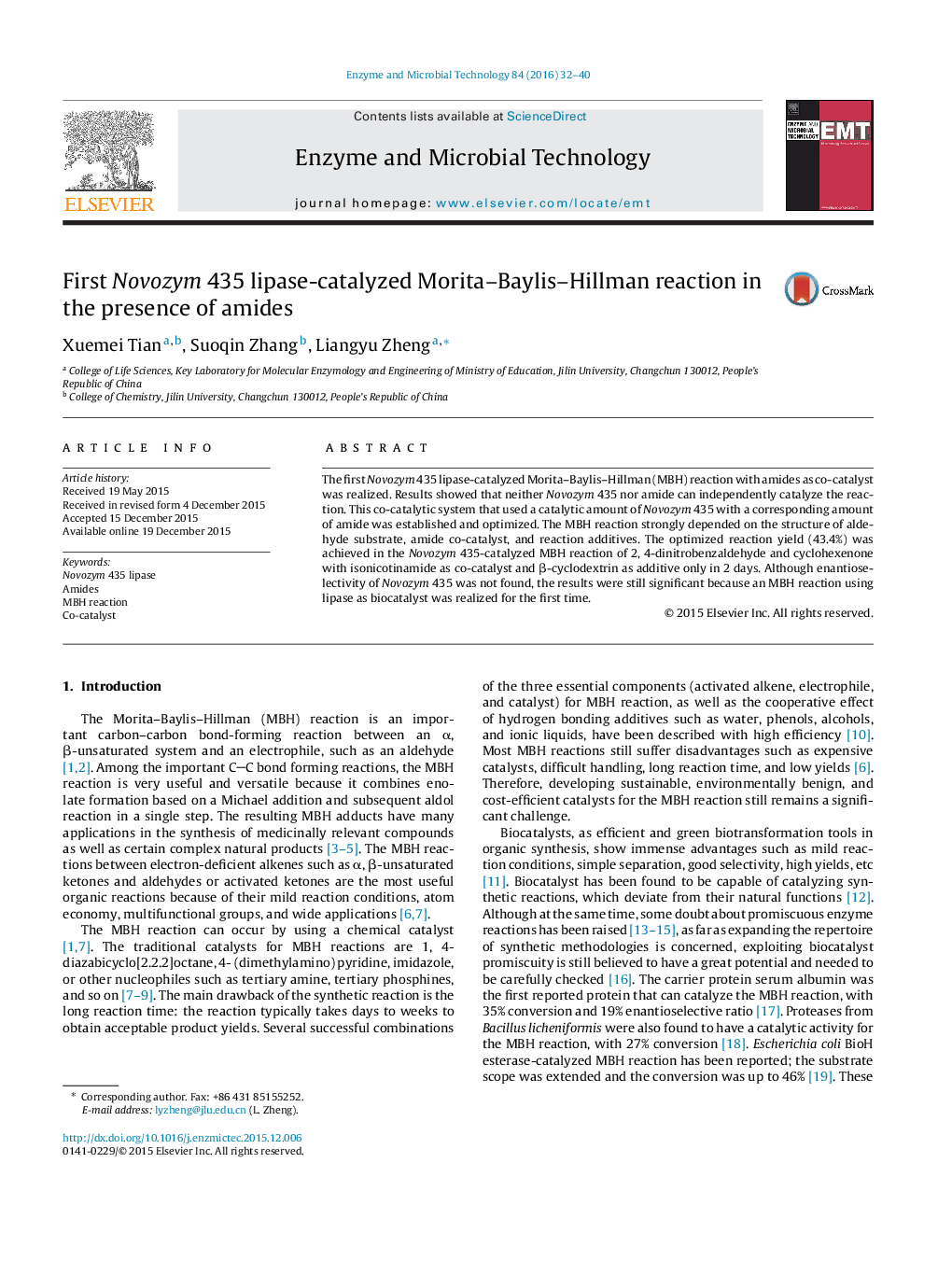| Article ID | Journal | Published Year | Pages | File Type |
|---|---|---|---|---|
| 16824 | Enzyme and Microbial Technology | 2016 | 9 Pages |
•The first lipase-catalyzed MBH reaction with amides as co-catalyst was realized.•The MBH adduct could be obtained in 43.4% yield.•The realization of lipase-catalyzed MBH reaction extended the enzyme promiscuity.
The first Novozym 435 lipase-catalyzed Morita–Baylis–Hillman (MBH) reaction with amides as co-catalyst was realized. Results showed that neither Novozym 435 nor amide can independently catalyze the reaction. This co-catalytic system that used a catalytic amount of Novozym 435 with a corresponding amount of amide was established and optimized. The MBH reaction strongly depended on the structure of aldehyde substrate, amide co-catalyst, and reaction additives. The optimized reaction yield (43.4%) was achieved in the Novozym 435-catalyzed MBH reaction of 2, 4-dinitrobenzaldehyde and cyclohexenone with isonicotinamide as co-catalyst and β-cyclodextrin as additive only in 2 days. Although enantioselectivity of Novozym 435 was not found, the results were still significant because an MBH reaction using lipase as biocatalyst was realized for the first time.
